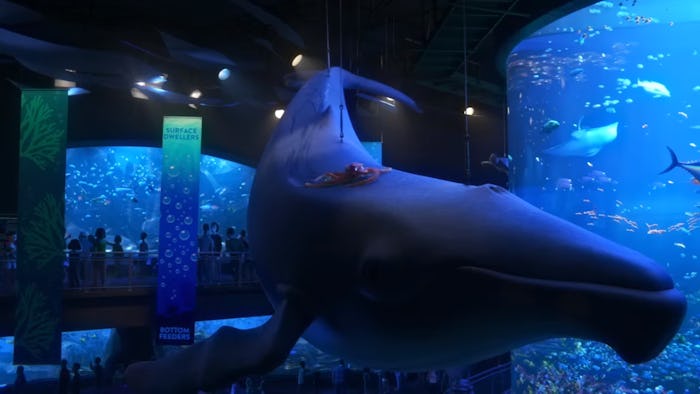Entertainment
Where Is The Marine Life Institute? Fans Want To Visit The 'Finding Dory' Aquarium
While Finding Nemo led to a glut of children begging for clownfish back in 2003, its recent sequel, Finding Dory, makes a pretty clear case against the captivity of marine life. So what's a kid to do if they want to meet a real-life Dory or Hank? Perhaps visit the marine animal rehabilitation and rescue center from the movie? Where is the Marine Life Institute, anyway? Well, it doesn't actually exist, at least not under that name. But the good news is, it's based on real facilities, particularly the Monterey Bay Aquarium in California, so fans really can find Dory if they want to.
Finding Dory director Andrew Stanton and producer Lindsey Collins revealed to SlashFilm that the Marine Life Institute was mainly inspired by the California facility, and the staff took multiple research trips there, even going so far as to photograph things from the perspective of the animals. Collins explained that they came to the idea because they were looking for a way to explain some of Dory's traits from the first film, such as her ability to read and speak whale. It made sense that she would have spent some time in an aquarium, and choosing a rescue gave filmmakers an excuse to surround Dory with other disabled animals.
The nonprofit Monterey Bay Aquarium is dedicated to conservation and animal research, according to its website, and it studies sharks, bluefin tuna, and sea otters to learn how overfishing, pollution, and climate change are contributing to their dwindling populations. The aquarium also works with policymakers on both the local and national levels to keep these animals safe, protect the ocean ecosystem, and promote sustainable fishing.
The Monterey Bay Aquarium also rescues, rehabilitates, and releases animals, just like the Marine Life Institute does in the movie. It has cared for birds sickened by oil spills, hatched and raised western snowy plovers, tagged and released rays and sharks for conservation research, and rescued abandoned sea otter pups. It even has a kelp forest, just like the one in Finding Dory, and a giant Pacific octopus who can change color, just like Hank. Tickets are a little on the pricey side ($49.95 for adults and $29.95 for children), but all the money goes towards helping animals and saving the ocean. For those who can't make it out to California, the aquarium has eight live webcams featuring penguins, otters, and more. Go ahead and click; I'm done here.
